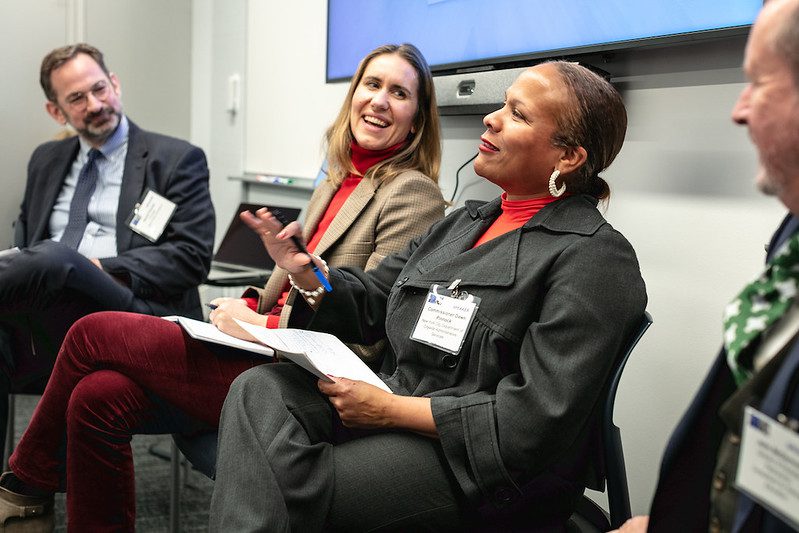Helping to frame the conversation was a report released in 2023 by the 5BORO Institute on the municipal staffing crisis. 5Boro found that between 2020 and 2023, New York City had lost 20,000 public sector workers across all City agencies and offices, thanks to a combination of staff resignations, slow hiring processes, and other factors.
Not surprisingly, a depleted municipal workforce means a reduction in the quantity and quality of public services. According to the 5BORO report, worker shortages contributed to longer stays in shelters for homeless families, delays in the City’s response to families that have applied for food assistance, slower inspections of potentially dangerous housing conditions, and higher risks to pedestrian safety, among many other consequences.
From the perspective of the workforce field, the staffing crisis has two major ramifications. For one thing, a December 2022 report from the City Comptroller found that the Departments of Small Business Services and Social Services both had job vacancy rates of over 20 percent—meaning delays in operations related to job training and employment.
At the same time, public sector jobs traditionally offer three attributes that workforce providers value: security, upward mobility, and high satisfaction. Most municipal jobs are unionized, and offer competitive compensation when benefits are considered. Civil service rules—while often a barrier to entry into public sector jobs—help facilitate advancement along career paths. Further, many city workers derive a sense of pride and purpose from serving their community. Understandably, then, conference attendees were eager to learn about how they can connect participants to employment opportunities with the City.

The panel featured 5BORO Institute executive director Grace Rauh, Department of Citywide Administrative Services (DCAS) Commissioner Dawn Pinnock, and Consortium for Worker Education Director of Strategic Partnerships John McDermott. The conversation, moderated by David Fischer of Altior Policy Solutions, began with Ms. Rauh describing some of the factors driving the municipal employment crisis and the strain on City workers. Among these are delayed promotions and raises, little or no flexibility for remote work, the slow pace of the hiring process, and the confusing and frustrating civil service rules.
Asked how DCAS is responding to these challenges, Commissioner Pinnock described her agency’s aggressive efforts to engage the community and recruit for priority positions through citywide hiring halls, expedited processes, and new incentives for current city workers. She also highlighted a number of programs intentionally designed to recruit highly skilled, diverse talent for career-track roles in city government. One such initiative is the Civil Service Pathways Fellowship, a partnership of DCAS with CUNY that places qualified college graduates in paid positions for up to two years while they take and pass the civil service exam.
Speaking from the perspective of organized labor, Mr. McDermott pointed out that the City could be more creative and proactive in recruiting New Yorkers for these opportunities. He cited several national and international best practices in this area, suggesting that NYC look to Canada, where apprenticeship programs are extensively built into a wide range of career paths. He also noted the importance of an adequately staffed City workforce both to help maintain quality of life across the five boroughs and to save money that otherwise might be expended on overtime and costs related to higher turnover, and suggested that the City explore developing a robust programmatic civil service track within CTE high schools.
Since the Conference, NYCETC has been in contact with DCAS to explore ways that the agency might better connect to New York City’s workforce community. Later this winter, they plan to jointly host a “Civil Service 101” session targeted at Coalition member organizations, with a focus on how providers can quickly connect their participants to accessible opportunities.
One additional path for New Yorkers with disabilities is the 55-a Program, through which qualified job candidates with disabilities can bypass the civil service exam otherwise required for many career-track positions in the public sector. DCAS works with the Mayor’s Office for People With Disabilities (MOPD) to offer a three-part municipal jobs training series related to this opportunity. For more information, jobseekers and provider organizations can contact MOPD.
Suggested Readings
Editor’s note: Latinos in New York’s government need to get loud about representing
NYC gives raises, extends parental, family leave to retain city workers
Jobs focused on processing food stamps exempted from NYC government hiring freeze amid major delays
Thousands more vacant positions eliminated in latest New York City budget cuts
Editor’s note: This was originally included in NYCETC’s Workforce Weekly newsletter on February 9, 2024. Subscribe here.
